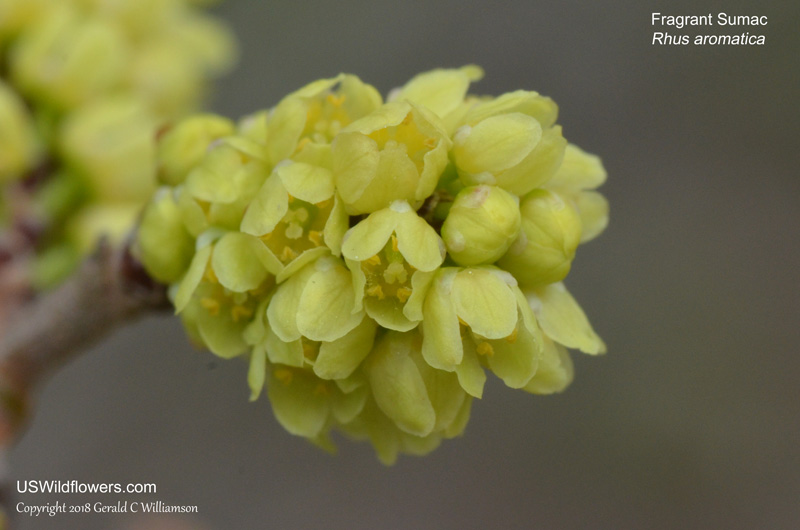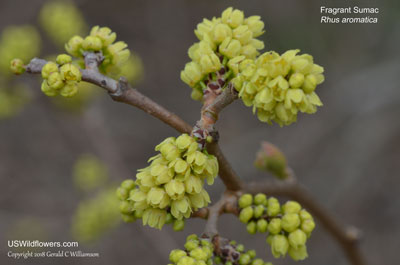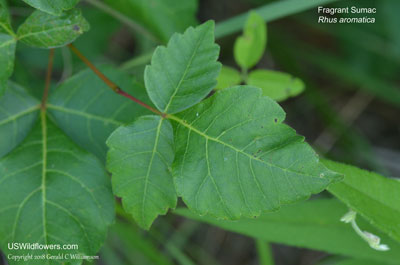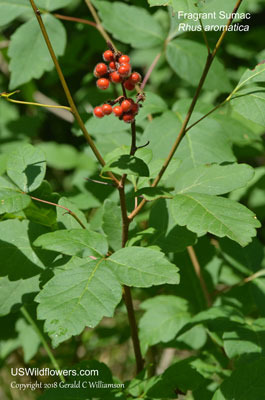Wildflowers of the United States | |||||||||||||
| |||||||||||||
Rhus aromatica - Fragrant Sumac, Aromatic Sumac, Squawbush, Skunkbush, Lemon Sumac, Polecat Bush. | Rhus - Sumac - is a small genus of about 35 species (Weakley, Wikipedia) of shrubs, small trees, and lianas native to Eurasia, North America, and northern Central America. Between 14 and 20 of those are found in North America, depending on the classification to which you subscribe. Flora of China says there are about 250 species in the genus; since that reference was written, the genus has been reclassified into multiple genera. As an example, the 60 African species formerly included in Rhus are now classified in the genus Searsia. It should be noted that the Sumac family - Anacardiaceae - not only includes Poison Ivy and Poison Sumac (Toxicodendron vernix, no longer classified within the Rhus genus), it also includes the valuable Cashew, Pistachio, and Mango plants. There seems to be notable disagreement on the classification of Rhus aromatica - Fragrant Sumac, and I expect it to change more in the near future. Historically Rhus aromatica was a plant of the eastern half of the United States and Canada, and Rhus trilobata was the classification of the equally aromatic - western species - the eastern species is commonly known as Fragrant Sumac, and the western known as Skunkbush. Both sport (mostly) sport trifoliolate leaves, whereas most Rhus species have 5 or usually more leaflets per leaf. Both had been recognized by some authorities as having several varieties or subspecies (including Rhus trilobata var. simplicifolia, which usually has a single leaflet.) Now, however, most authorities seem to have combined the two species into R. aromatica, giving the combined species a range that covers the entire lower 48 United States except Maine, Delaware, and Rhode Island. While some authorities recognize up to 13 varieties or subspecies, and consider Rhus aromatica var. trilobata to be the western variety, the narrowest circumscription only concedes three varieties - var. aromatica, var. pilosissima, and var. simplicifolia. Because of the disagreement in classification, the USDA map to the right only shows the species in the eastern half of the United States. The foliage of Rhus aromatica can be confused with Poison Oak (Toxicodendron pubescens), but Rhus does not contain urushiol, the oil to which so many of us have severe reaction. The fruit of Rhus is red; that of Toxicodendron is white. The inflorescence of Rhus is compact; that of Toxicodendron is open and axillary. Found in: AL, AR, AZ, CA, CO, CT, FL, GA, HI, IA, ID, IL, IN, KS, KY, LA, MA, MD, MI, MN, MO, MS, MT, NC, ND, NE, NH, NJ, NM, NV, NY, OH, OK, OR, PA, SC, SD, TN, TX, UT, VA, VT, WA, WI, WV, WY  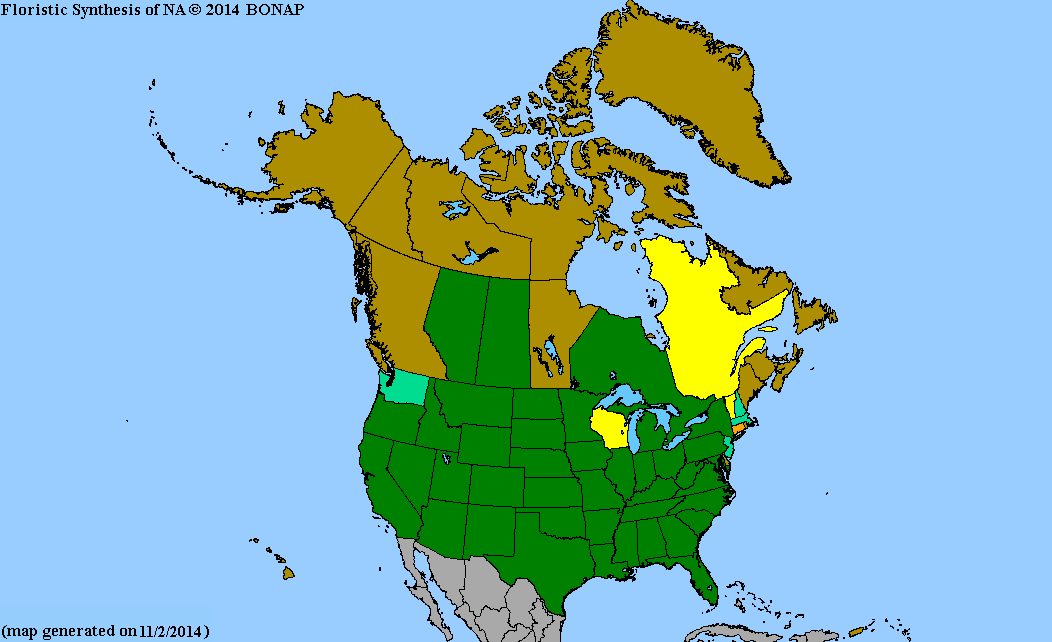 Map courtesy of The Biota of North America Program. Map color key Search Our Database: Enter any portion of the Scientific, Common Name, or both. Do a general Google search of the entire site: #ad
| #ad
| | ||||||||||
|
Commercial / Cookie Notice Looking for Wildflowers for a specific state? Check here: | |||||||||||||
|
All content except USDA Plants Database map Copyright Gerald C. Williamson 2025 | |||||||||||||
Code Update 20230302

